Welcome to the world of cannabis concentrates! With a growing interest in the many uses of this fascinating plant, people from all walks of life are eager to explore the power and versatility of concentrated cannabis. This article offers a comprehensive yet accessible guide to understanding and creating cannabis concentrates right in the comfort of your own home.
We’ll cover everything from the basics of these concentrates to the associated benefits and risks, as well as the various extraction methods and types of concentrates available. You’ll even learn how to make concoctions and find the best strains for at-home concentrate recipes. So sit back, relax, and prepare to embark on a journey that will open your eyes to a new world of cannabis possibilities!
What are cannabis concentrates?
Cannabis concentrates are products derived from the cannabis plant that have been processed to isolate and retain the most potent and desirable compounds, such as cannabinoids (e.g., THC and CBD) and terpenes. The result is a concentrated form of cannabis, often with higher potency and pronounced effects compared to traditional cannabis flower buds.
Concentrates come in a variety of forms, including oils, tinctures, wax, shatter, and live resin, and can be consumed in different ways, such as vaporizing, dabbing, or adding them to edibles. They are popular among both recreational and medical users for their enhanced potency and targeted effects.
Benefits & Risks of Cannabis Concentrates
Benefits:
a. Potency: Cannabis concentrates often have a much higher concentration of cannabinoids, such as THC and CBD, than the cannabis flower. This means users can achieve more substantial effects with smaller amounts of the product.
b. Fast-acting effects: Concentrates are often consumed through vaporization or dabbing, which allows the active compounds to be absorbed quickly into the bloodstream, resulting in a faster onset of effects.
c. Customization: Concentrates can be tailored to individual needs, with specific ratios of cannabinoids and terpenes, making it easier for users to target specific symptoms or desired effects.
d. Discreet consumption: Due to their concentrated nature, cannabis concentrates often produce less odor than traditional cannabis flower, making them a more discreet option for consumption.
Risks:
a. Overconsumption: Due to their high potency, it can be easy to consume too much of a cannabis concentrate, potentially leading to uncomfortable side effects such as increased heart rate, dizziness, or nausea. It’s essential to start with a small dose and gradually increase it as needed.
b. Impurities: If not produced using proper techniques and equipment, cannabis concentrates can contain residual solvents, pesticides, or other contaminants, which can be harmful when consumed. It is crucial to source concentrates from reputable producers or dispensaries and look for lab-tested products.
c. Accidents during production: Making cannabis concentrates at home, particularly those involving solvents, can be dangerous if not done correctly. There is a risk of explosion or exposure to harmful chemicals if proper safety precautions are not taken.
d. Legal concerns: In some regions, cannabis concentrates may be subject to different regulations than cannabis flower, including restrictions on possession or production. It’s essential to be aware of local laws and regulations surrounding cannabis concentrates.
Types of Plant Extracts & Concentrates
- Kief: The resinous trichomes collected from cannabis flowers, often found in grinders or sifted through a fine mesh screen. Kief is the most basic form of cannabis concentrate and can be smoked, pressed into a hash, or used in cooking.
- Hash: A compressed form of kief or trichomes, typically made by applying heat and pressure. Hash can range in consistency from a soft, malleable substance to a hard, brittle product. It can be smoked, vaporized, or added to edibles.
- Rosin: A solventless concentrate that applies heat and pressure to cannabis flowers or hash. Rosin has a dense, sap-like consistency and is often consumed through dabbing or vaporizing.
- Shatter: A brittle, glass-like concentrate made using a solvent-based extraction method, typically involving butane or propane. Shatter has a high cannabinoid and terpene content and is often consumed by dabbing or vaporizing.
- Wax: A soft, malleable concentrate with a texture similar to candle wax, also produced using solvent-based extraction methods. Wax can be consumed through dabbing, vaporizing, or adding to a joint or bowl of cannabis flower.
- Oil: A liquid concentrate using various extraction methods, including CO2, ethanol, or hydrocarbon solvents. Cannabis oils can be consumed directly, used in edibles, vaporized, or applied topically.
- Tinctures: Alcohol or glycerin-based extracts that are typically consumed sublingually (under the tongue) or added to food and beverages. Tinctures allow for precise dosing and have a longer shelf life than other concentrate forms that aren’t in their liquid phase.
- Distillate: A highly refined, potent concentrate made using fractional distillation, which isolates specific cannabinoids (e.g., THC or CBD) and removes impurities. Distillate can be consumed directly, added to edibles, or used in vape cartridges.
- Live Resin: A concentrate produced by flash-freezing fresh cannabis flowers and extracting the cannabinoids and terpenes using a solvent-based method. Live resin retains more of the plant’s original terpene profile, resulting in a more flavorful and aromatic product. It is often consumed through dabbing or vaporizing.
- Crystalline: A highly purified form of cannabinoids, such as THC or CBD, in a crystalline structure. Crystalline can be consumed directly, added to edibles, or combined with other concentrates to create customized cannabinoid ratios.
Different Extraction Methods
The world of cannabis concentrates is rich and diverse, with many different methods available to extract the desired compounds from the plant material. Each extraction method has its own unique benefits and drawbacks, and the choice of which one to use often depends on the desired outcome and personal preferences.
In this section, we’ll explore the differences between solvent-based and solventless extraction techniques, as well as the distinction between isolates and broad or full-spectrum concentrates. By understanding these various extraction methods, you’ll be better equipped to choose the best approach for your cannabis concentrate needs.
Extraction: Solvent Vs. Solventless
Solvent-based extraction methods involve using a chemical solvent, such as butane hash oil, propane, or CO2, to dissolve the cannabinoids and terpenes from the cannabis plant material. The solvent is then evaporated, leaving behind a concentrated form of cannabis. These methods often result in higher potency concentrates and can be effective at preserving the delicate terpene profiles of the plant.
However, there is a risk of residual solvents remaining in the final product if not properly purged, which can be harmful when consumed. Additionally, solvent-based extractions can be more complex and dangerous to perform, particularly for individuals inexperienced to the cannabis extraction process.
On the other hand, a solventless extraction process does not rely on chemical solvents to extract the desired compounds. Instead, they use mechanical or physical means, such as heat, pressure, or agitation, to separate the cannabinoids and terpenes from the plant material. Examples of solventless concentrates include rosin, kief, and dry sift hash.
Solventless methods are generally considered to be safer and more environmentally friendly, as there are no potentially harmful solvents involved in the process. However, the potency of solventless concentrates may be lower than their solvent-based counterparts, and they may require more manual labor to produce a cannabis extract.
Isolates Vs. Broad and Full Spectrum
Isolates are cannabis concentrates that contain a single, isolated cannabinoid, such as THC or CBD. These products are created through various extraction and purification processes, resulting in a highly concentrated, crystalline form of the desired cannabinoid. Isolates are valued for their purity and precision, as they allow users to consume specific cannabinoids without the presence of other plant compounds. They can be used to create customized cannabinoid ratios or to target specific symptoms or effects.
Broad and full-spectrum concentrates, on the other hand, contain a range of cannabinoids, terpenes, and other plant compounds, which are preserved during the extraction process. Full-spectrum products include all of the naturally occurring compounds found in the cannabis plant, while broad-spectrum products have had specific compounds, such as THC, removed.
These concentrates are thought to offer an “entourage effect,” where the combined action of the various plant compounds may provide a more comprehensive and potentially synergistic experience for the user. Many people prefer full or broad-spectrum concentrates for their more complex flavor profiles and potentially enhanced therapeutic effects.
Making Cannabis Concentrates: Unleash Your Inner Chemist
So, you’re ready to take the plunge and start making your own cannabis concentrates at home? Fantastic! This rewarding DIY project not only allows you to customize your own cannabis experience but also allows you to discover new and exciting ways for consuming cannabis concentrates.
Before we get into the nitty-gritty of the recipe, let’s ensure you have everything you need to create your cannabis masterpiece. We’ll walk you through the essential ingredients, supplies, and directions to ensure a successful and enjoyable experience. And don’t worry – we’ll also cover storage tips to keep your freshly-made concentrates in tip-top shape. Let’s get started on the ethanol extraction process!
Ingredients
- Cannabis flower (7-14 grams, depending on the desired potency)
- 99% Isopropyl alcohol or food-grade ethanol (1 quart)
Note: The amount of cannabis flower needed depends on the desired potency of your concentrate. Also, it’s crucial to choose high-quality cannabis for a more effective and flavorful concentrate.
Supplies
- Glass jar with a tight-fitting lid (1 quart)
- Fine mesh strainer or cheesecloth
- Unbleached coffee filters
- Glass baking dish
- Silicone spatula
- Fan or well-ventilated area
- Razor blade or scraper
- Storage container (preferably glass or silicone)
Directions
- Finely grind your cannabis flower and place it in the glass jar.
- Pour the isopropyl alcohol or food-grade ethanol into the jar until the cannabis is fully submerged.
- Seal the jar tightly and shake it vigorously for 3-5 minutes, ensuring the plant material mixes well with the solvent.
- Place the fine mesh strainer or cheesecloth over a clean glass container and pour the mixture through it to separate the plant material from the liquid. Dispose of the plant material.
- Use the unbleached coffee filters to filter the liquid further, removing any remaining fine plant particles. This may require several passes to ensure a clear solution.
- Pour the filtered liquid into the glass baking dish and place it in a well-ventilated area or under a fan to evaporate the solvent. This process can take between 24 and 72 hours, depending on the ambient temperature and humidity. Be patient, and avoid using direct heat, as it can degrade the quality of your concentrate.
- Once the solvent has completely evaporated, you’ll be left with a sticky, concentrated residue. Use a razor blade or scraper to collect the concentrate, being careful not to scratch the glass.
- Transfer the collected concentrate to your storage container.
Storage Tips
- Store your cannabis concentrate in a cool, dark place, away from direct sunlight and heat sources. This will help maintain the potency and flavor of the concentrate.
- Opt for airtight glass or silicone containers, as they are less likely to react with the concentrate and can help prevent contamination.
- Label each container clearly to avoid confusion if you have multiple strains or types of concentrates.
- For long-term storage, consider placing your concentrates in a refrigerator or freezer. Just be sure to let them come to room temperature before using them to avoid any loss of quality or consistency.
Dosing Concentrates 101
Navigating the world of cannabis concentrates can be a bit daunting, especially when it comes to determining the right dosage for your needs. Concentrates often have a much higher potency than traditional cannabis flower, making accurate dosing essential to avoid overconsumption and uncomfortable side effects.
Here, we’ll discuss some basic guidelines for dosing cannabis concentrates and provide a general dosage table to help you find your optimal dose. Keep in mind that individual tolerance and sensitivity to cannabis can vary widely, so it’s always best to start with a low dose and gradually increase as needed.
General Dosage Table:
Please note that this dosage table is only a rough guideline, as individual responses to cannabis can vary greatly. It is important to start with a low dose and titrate up slowly to find the optimal dose for your needs.
| Experience Level | Suggested Starting Dose |
|---|---|
| Beginner | 5-10mg THC or CBD |
| Intermediate | 10-25mg THC or CBD |
| Advanced | 25-50mg THC or CBD |
| Expert | 50+ mg THC or CBD |
When dosing cannabis concentrates, it’s essential to consider the potency of the product. Concentrates can range from 40% to over 90% cannabinoid content, so it’s crucial to know the percentage of THC or CBD in your concentrate and adjust your dosage accordingly.
Here are some general tips for dosing cannabis concentrates:
- Start low and go slow: Begin with a small dose, such as 5-10mg of THC or CBD, and wait at least 30 minutes to 2 hours before consuming more. This will allow you to gauge your body’s response to the concentrate and determine if you need to increase the dose.
- Know your tolerance: If you’re a regular cannabis user, you may have a higher tolerance to the effects of cannabinoids, meaning you may require a larger dose to achieve the desired effects. Conversely, if you’re new to cannabis or have a low tolerance, you should start with a smaller dose and increase gradually as needed.
- Consider your desired effects: The optimal dose for cannabis concentrates may depend on the desired effects, such as relaxation, pain relief, or creativity. Experiment with different doses to find the right balance that meets your needs.
- Use a scale or measuring tool: To ensure accurate dosing, use a scale or measuring tool designed explicitly for cannabis concentrates. This will help you avoid overconsumption and ensure a consistent dosage each time.
- Consult a medical professional: If you’re using cannabis concentrates for medical purposes, it’s always best to consult a medical professional for personalized dosing recommendations and guidance.
Best Strains for At-Home Concentrate Recipes
When choosing the best strains for at-home concentrate recipes, it’s essential to consider factors such as potency, flavor, and the desired effects you’re seeking. Here are five strains that are popular for making cannabis concentrates due to their unique characteristics and high-quality output:
- Blue Dream: Blue Dream is a popular hybrid strain with a balanced mix of Sativa and Indica effects, making it an excellent choice for a wide range of concentrate recipes. Its high THC content and rich terpene profile, characterized by notes of blueberry and citrus, make it an ideal candidate for producing flavorful and potent concentrates.
- Gorilla Glue #4 (GG4): GG4 is a potent hybrid cannabis strain known for its high THC levels and sticky, resinous buds, which are perfect for producing concentrates. Its earthy, piney aroma and strong, relaxing effects make it an excellent choice for those seeking a potent concentrate for pain relief, relaxation, or stress reduction.
- Girl Scout Cookies (GSC): GSC is a famous hybrid strain with a sweet, earthy aroma and high THC content. It’s well-suited for concentrate production due to its dense, resinous buds and potent, balanced effects. GSC concentrates are often used for their ability to deliver relaxation, euphoria, and relief from various ailments.
- Sour Diesel: Sour Diesel is a classic Sativa-dominant strain known for its pungent, diesel-like aroma and energizing effects. Its high THC content makes it an excellent choice for producing potent concentrates. Sour Diesel is often used for its uplifting, creative, and stress-relieving properties, making it an ideal strain for daytime concentrate use.
- Granddaddy Purple (GDP): GDP is an Indica-dominant strain with a sweet, fruity aroma and deep purple coloration. It’s known for its high THC content and relaxing, sedative effects, making it an excellent choice for producing concentrates intended for evening use or relief from insomnia, pain, or anxiety. Its rich terpene profile also lends itself well to flavorful and aromatic concentrates.
Can Using Cannabis Concentrates Affect the Results of an At-Home Drug Test for Weed?
Using cannabis concentrates can potentially affect the results of an at-home drug test for weed. These concentrated forms of cannabis can contain higher levels of THC, which may lead to a positive result on the at-home drug test. It’s important to be aware of the potential impact of using these concentrates on the accuracy of the at-home drug test.
Can I Buy Store-bought Weed Concentrates?
You can buy store-bought weed concentrates, provided you live in a region where cannabis is legal for recreational or medicinal use. Numerous reputable brands are offering high-quality concentrates on the market. Here are three top brands known for their exceptional products:
- Raw Garden: Known for its wide range of high-quality concentrates, it is popular among cannabis enthusiasts. They offer a variety of live resins, sauce pens, and cartridges made from single-source cannabis, which ensures a consistent and enjoyable experience for users.
- Moxie: Moxie is another leading brand in the cannabis concentrate industry. They specialize in producing live resin extracts, budder, shatter, and vape cartridges. Moxie is dedicated to maintaining the highest standards in its products, using only the best materials and extraction methods to ensure a top-notch experience for its customers.
- 710 Labs: 710 Labs is a highly regarded cannabis concentrate brand focusing on small-batch, artisanal production. They offer a range of products, including live resin, rosin, and various solventless extracts. With a commitment to quality and transparency, 710 Labs has earned a loyal following among discerning cannabis concentrate enthusiasts.
When purchasing store-bought weed concentrates, always buy from licensed dispensaries or retailers. Pay attention to the product’s lab testing results to ensure you get a safe, high-quality concentrate.
Wrapping It Up
By now, you should understand what cannabis concentrates are, their benefits and risks, and the various extraction methods and types available including liquid extraction, microwave assisted extraction, and more. We hope this guide has provided you with valuable insight into making your own concentrates at home and practical tips on storage, dosing, and choosing the best strains for your at-home recipes.
Whether you’re an experienced cannabis enthusiast or a curious beginner, creating your own concentrates can be a rewarding and enjoyable adventure. And remember, while store-bought weed concentrates are available, there’s nothing quite like the satisfaction of crafting your own unique creations. So go forth, experiment, and uncover the endless potential of cannabis extracts and concentrates!

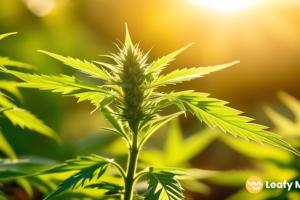
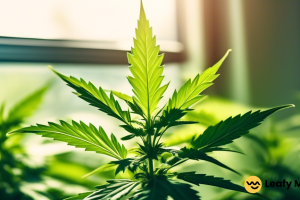





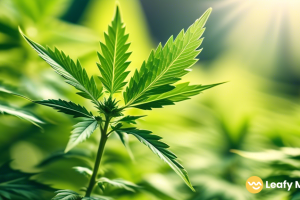
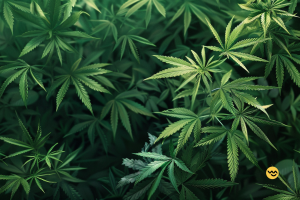
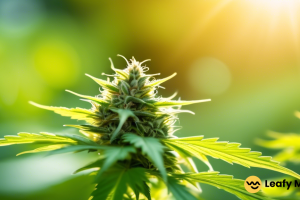
Leave a Reply